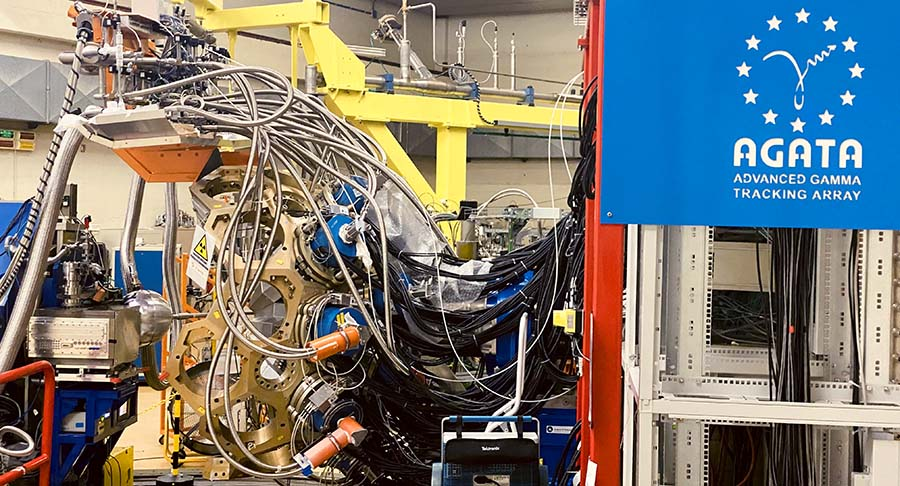Orateur
Description
In December 2022, an experiment was performed at INFN-LNL with a $^{208}$Pb beam at 1300 MeV impinging on a $^{9}$Be target, using the inverse kinematics fusion-fission reaction for both nuclear structure and reactions studies. The experiment was performed using the AGATA $\gamma$-ray tracking array coupled to the magnetic spectrometer PRISMA [1–3]. This setup allowed one to measure the $\gamma$ rays from the de-excitation of the fission fragments and to study the dynamics of the fission of the compound nucleus, $^{217}$Rn.
One of the interesting nuclear structure issues that can be tackled in the neutron-rich region reached through the fission of this system is the evolution of the shell gap at $N=50$.
The observation of the reduction of the $N=50$ shell gap [4, 5] is a phenomenon that motivated different measurements in the $N=50$ isotones towards $^{78}$Ni.
In particular, estimates starting from mass measurements show a decrease of the $N=50$ gap size from $Z=40$ until $^{82}$Ge, while for $^{80}$Zn a re-increase is observed [6]. A second method to estimate the gap size is with the energy of medium-spin states in $N=50$ even-even isotones.
The fusion-fission reaction mechanism is an effective production method for spectroscopy of these levels because it can populate states at higher spins than transfer reactions, up to 6-8 units of angular momentum [6]. While the production
cross section for the very exotic N = 50 nuclei with Z < 31 becomes small, the less neutron-rich isotopes in this region are
populated with higher yields and a more detailed spectroscopy of their excited levels is possible. We will show preliminary results on γ-ray spectroscopy of N = 40 − 50 isotopes in the region with
Z = 29 − 32.
In parallel to the $\gamma$-ray spectroscopy of the energy levels of the fission products, the measurement of the fragments with the large acceptance spectrometer PRISMA gives access to key quantities for the description of the fission dynamics of the $^{217}$Rn compound nucleus. The $(A,Z)$ identification and the reconstruction of the fragment velocities in the center of mass of the fissioning system allow the extraction of relevant observables, such as the total kinetic energy ($TKE$), the neutron excess $N/Z$ and the neutron evaporation as a function of the nuclear charge [7]. For the examined system of $^{217}$Rn, symmetric fission is expected [8] and therefore structure effects on the yield distribution should be smaller, but the neutron-rich part of this region was never tested experimentally and observables which are sensitive to the influence of nuclear structure in fission, such as $N/Z$, still have to be studied.
The goal in this experiment is to study the behaviour of the relevant observables in the fission fragments to find features around particular $Z$ or $N$ numbers [9] that might show the role of shell effects at high excitation energy in this region of nuclei. We will show preliminary results on the fission fragment identification and distributions.

